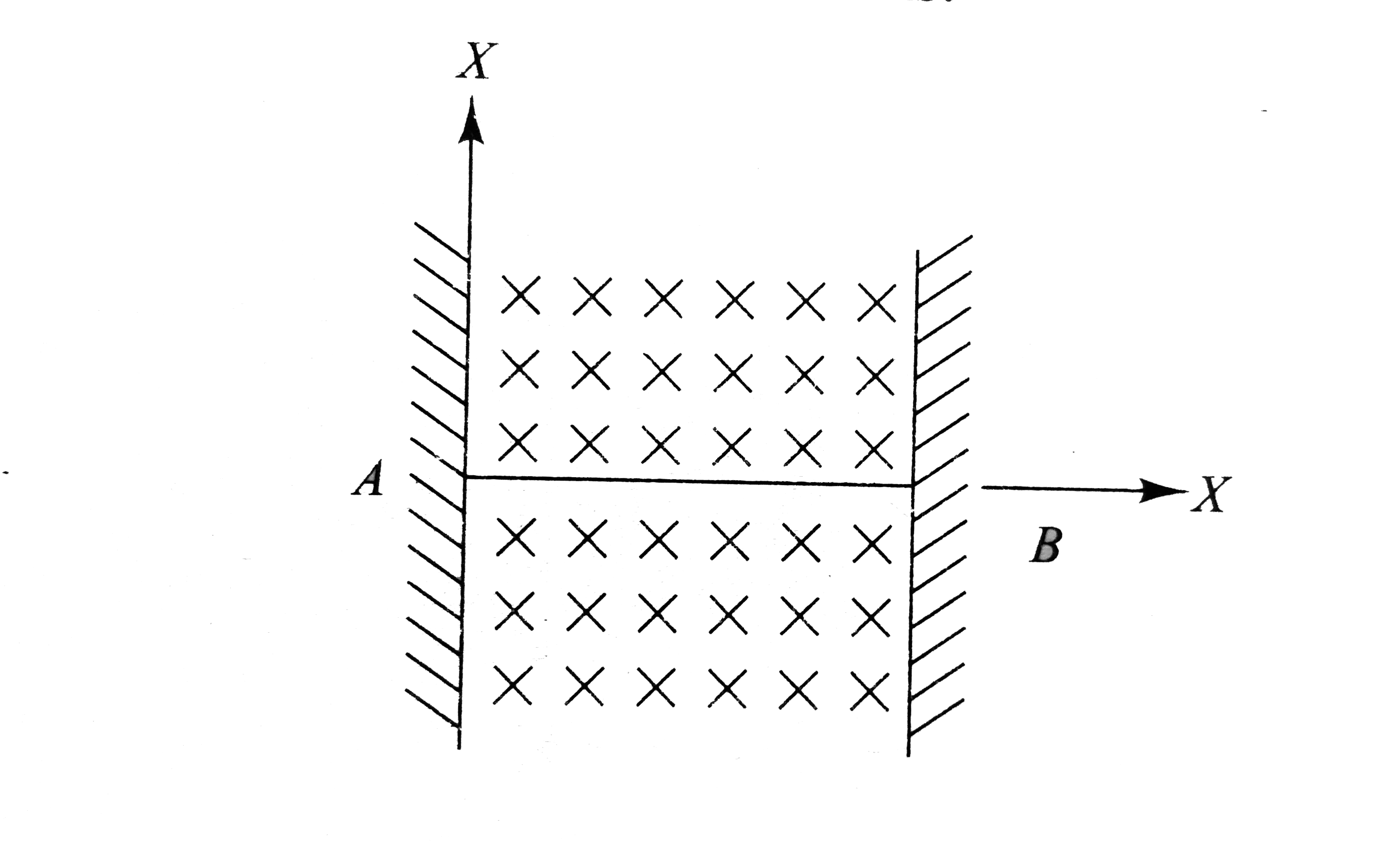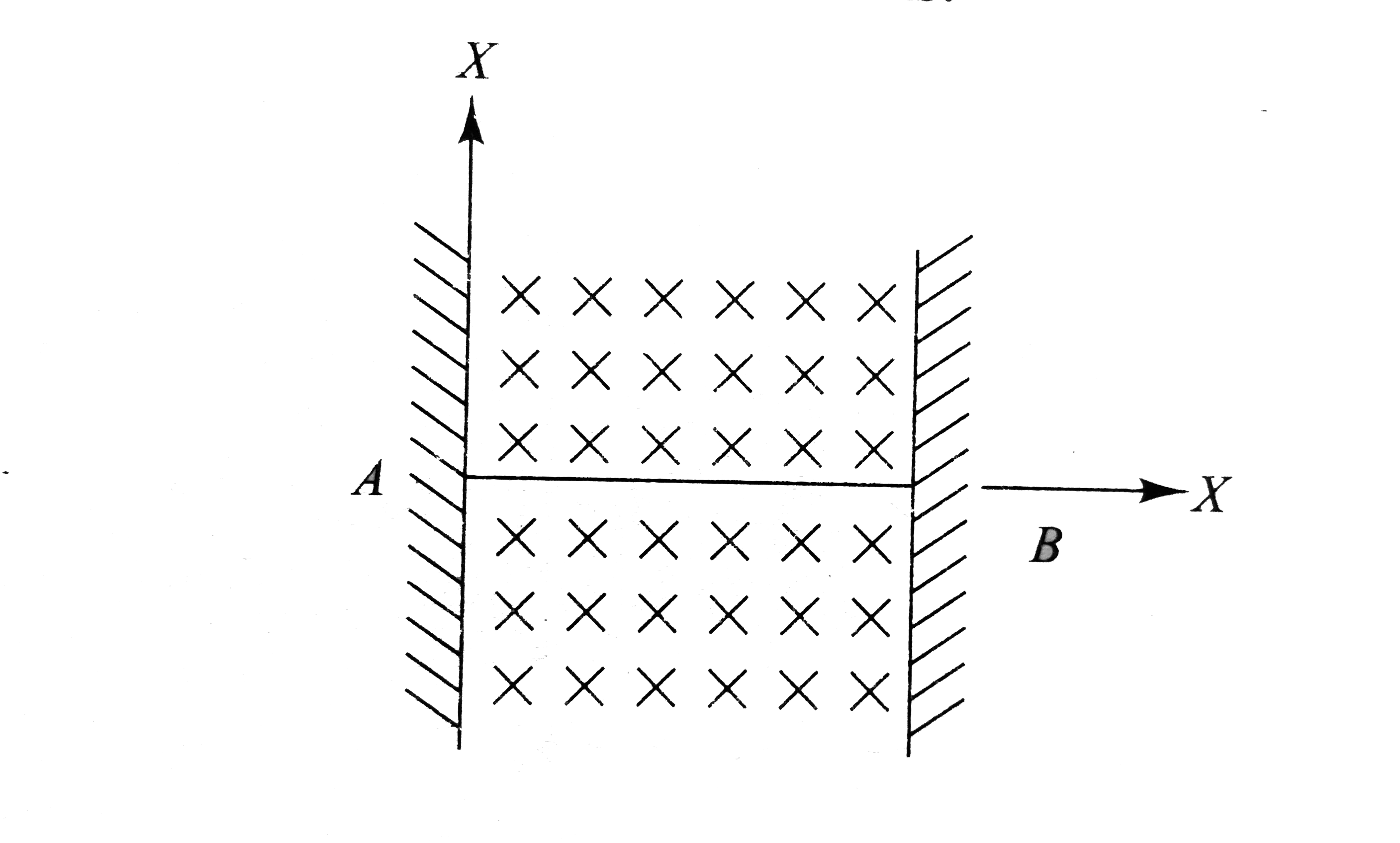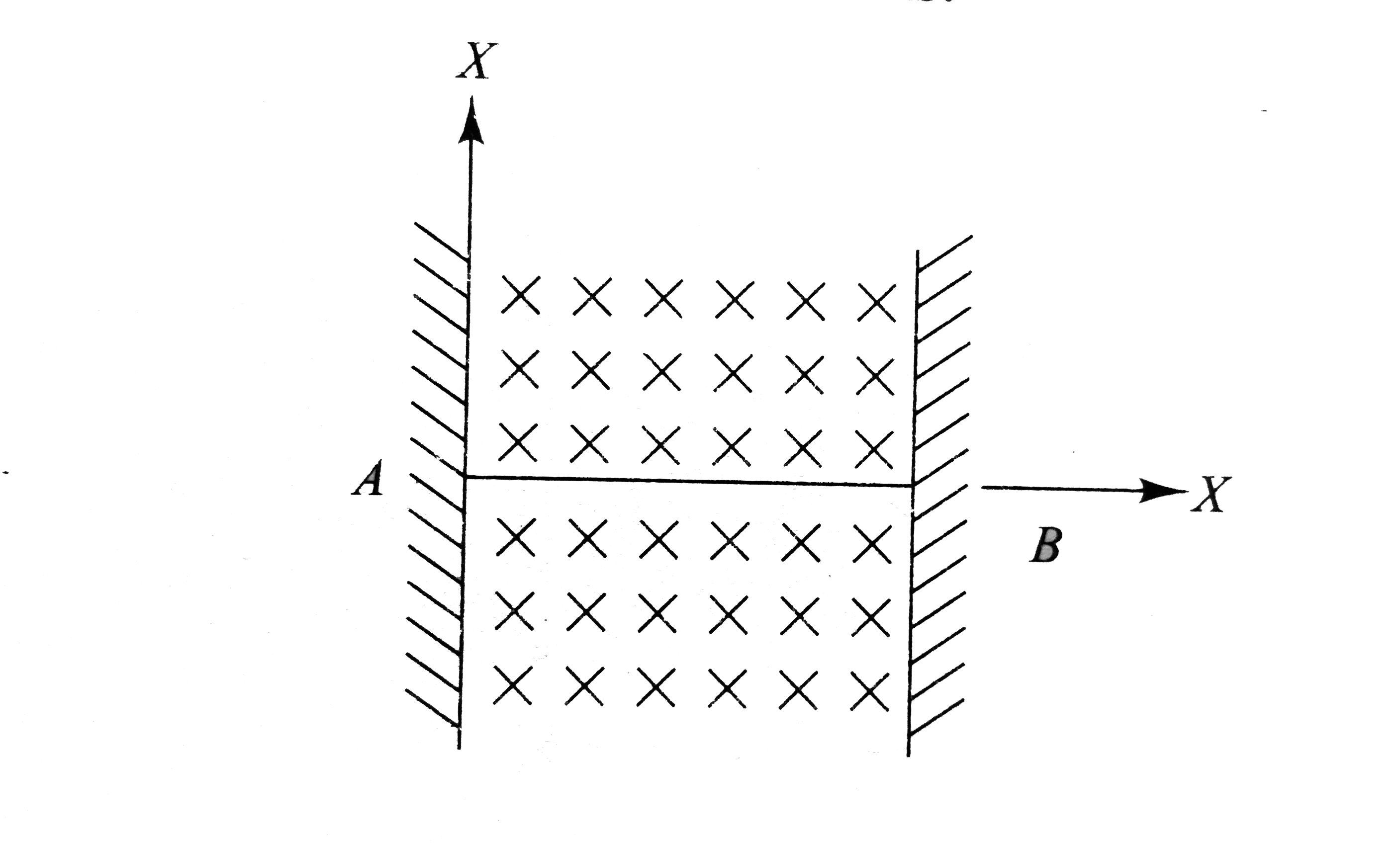A stsnding wave y=2Asinkxcosωt is set up in the wire AB fixed at both ends by two vertical walls (see Fig. 3.197). The region between the walls contains a constant magnetic field B. Now answer the following question:

In which of the following modes the emf induced in AB is always zero?
Fundamental mode
second harmonic
Second overtone
Fourth overtone
Step by step video & image solution for A stsnding wave y = 2A sin kx cos omegat is set up in the wire AB fixed at both ends by two vertical walls (see Fig. 3.197). The region between the walls contains a constant magnetic field B. Now answer the following question: In which of the following modes the emf induced in AB is always zero? by Physics experts to help you in doubts & scoring excellent marks in Class 12 exams.
Updated on:21/07/2023Topper's Solved these Questions
- GMP ASSESMENTBOOK - FIITJEECHAPTER - GMP ASSESMENTEXERCISE - Numerical Based
61 Videos
- GMP ASSESMENTBOOK - FIITJEECHAPTER - GMP ASSESMENTEXERCISE - Multiple Question
58 Videos
- GENERAL PHYSICSBOOK - FIITJEECHAPTER - GENERAL PHYSICSEXERCISE - MATRIX MATCH TYPE
3 Videos
- GRAVITATIONBOOK - FIITJEECHAPTER - GRAVITATIONEXERCISE - Numerical based Question
2 Videos
Similar Questions
A standing wave y=2Asinkxcosωt is setup in the wire AB fixed at both ends by two vertical walls (see the figure). the region between the wall contains a constant magnetic field B. Now answer the following questions.
In the above question, the time when the emf becomes maximum for the first time is

View SolutionSee the figure here. We have two hollow thin spherical shells A and B of radii R, and R, respectively. Initially as shown in Fig. (i) shell B has a charge + Q which is uniformly distributed over its outer surface but shell B has no charge. At a particular instant the two spherical shells are connected by a thin copper wire as shown in Fig. (ii). After a couple of minutes two spherical shells A and B are disconnected again as shown in Fig. (iii).

Now answer the following questions :
Find the ratio of electric field on the surfaces of shell A and B.
View Solution
Knowledge Check
A stsnding wave y=2Asinkxcosωt is set up in the wire AB fixed at both ends by two vertical walls (see Fig. 3.197). The region between the walls contains a constant magnetic field B. Now answer the following question:

In the above qestion, the time when the emf becomes maximum for the time isA(a) 2πωB(b) πωC( c) π2ωD(d) π4ωA standing wave y=2Asinkxcosωt is set up in the wire AB fixed at both ends by two vertical walls (see Fig. 3.197). The region between the walls contains a constant magnetic field B. Now answer the following question:

The wire is found to vibrate in the third harmonic. The maximum emf induced isA(a) 4(AB)ωkB(b) 3(AB)ωkC( c) 2(AB)ωkD(d) ABωkThere are two infinite parallel current carrying wires in vertical plane. Lower wire is fixed and upper wire is having a linear mass density λ. Two wires are carrying currents I1 and I2. Now upper wire is placed in a magnetic field produced by lower wire. Magnetic field due to lower wire at the location of upper wire is μ0I2πd, where I1 current lower wire, d separation between wires.
Force on any small portion of upper wire having length dl is dF=μ0I1I2dl2πd, where I2 current in the upper wire. If directions of current in the wires is appropriate then upper wire can be in equilibrium if its weight is balanced by magnetic force. Now answer the following questions.
If upper wire is slightly displaced from its mean position and released it will perform simple harmonic motion. As wire then total mechanical energy of wireARemains constantBDecreasesCWe can't say anything about mechanical energy in magnetic fieldDIncreases
A conducting rod of length l slides at constant velocity v on two parallel conducting rails, placed in a uniform and constant magnetic field B perpendicular to the plane of the rails as shown in Fig.3.49. A resistance R is connected between the two ends of the rails.

(a) Idenify the cause which produces change in magnetic flux.
(b) Identify the direction of current in the loop.
( c) Determine the emf induced in the loop.
(d) Compute the electric power dissipated in the resistor.
(e) Calcualte the mechenical power required to pull the rod at a cinstant velovity.
View SolutionLinked Comprehension Type Based upon each paragraph, three multiple choice questions have to be answered. Each question has four choices: a, b, c, and d, out of which only one is correct For Problems 1-3 center is at Each side of a square has length 4 units and its (3, 4). If one of the diagonals is parallel to the line y x, then answer the following questions 1. Which of the following is not the vertex of the square? a. (1, 6) b. (5, 2) c. (1, 2) d. (4, 6) 2. The radius of the circle inscribed in the triangle formed by any three vertices is a. 2020V2 1) 2012 1) d. none of these 3. The circle inscribed in the triangle forme radius of the by any two vertices of the square and the center is b. 202 1) a. 2012 1) d. none of these v2012 1) For Problems 4-6 Tangents PA and PB are drawn to the circle (x 4) 4 from the point P on the curve y sin x, where A and B on the circle. Consider the function y f(r) represented by locus of the center of the circumcircle of triangle PAB. T answer the following questions
View SolutionA thin non-conducting ring mass m, radius a, carrying a charge q can rotate freely about its own axis which is vertical. At the initial moment the ring was at rest and no magnetic field was present. At instant t=0, a uniform magnetic field is switched on which is vertically downwards and increase with time according to the law B=B0t. Neglecting magnetism induced due to totational motion of the ring. Now answer the following questions.
The angular acceleration of the ring and its direction of rotation as seen from above: if E is induced e.m.f
View SolutionThe van der Waal's equation of state for 1 mole real gas is (P+aV2)(v−b)=RT....(i)
The Virial equation for 1 mole real gas is PV=RT[1+xV+yV2+zV3+..... To higher power of V] ....(ii)
when x, y and z are constants which are known as 2nd, 3rd adn 4th co-efficients respectively. The temperature at which real gas obeys ideal gas equation i.e., (PV=nRT) is known as Boyle's temperature.
Answer the following questions on the basis of the above write up :
Which of the following is the incorrect statement about the Boyle's temperature ?
View SolutionEstimation of frequency of a wave forming a standing wave represented by y=Asinkxcost can be done if the speed and wavelength are known using speed=Frequency×wavelength . Speed of motion depends on the medium properties namely tension in string and mass per unit length of string . A string may vibrate with different frequencies . The corresponding wavelength should be related to the length of the string by a whole number for a string fixed at both ends . Answer the following questions:
Speed of a wave in a string forming a stationary wave does not depend on
View Solution
